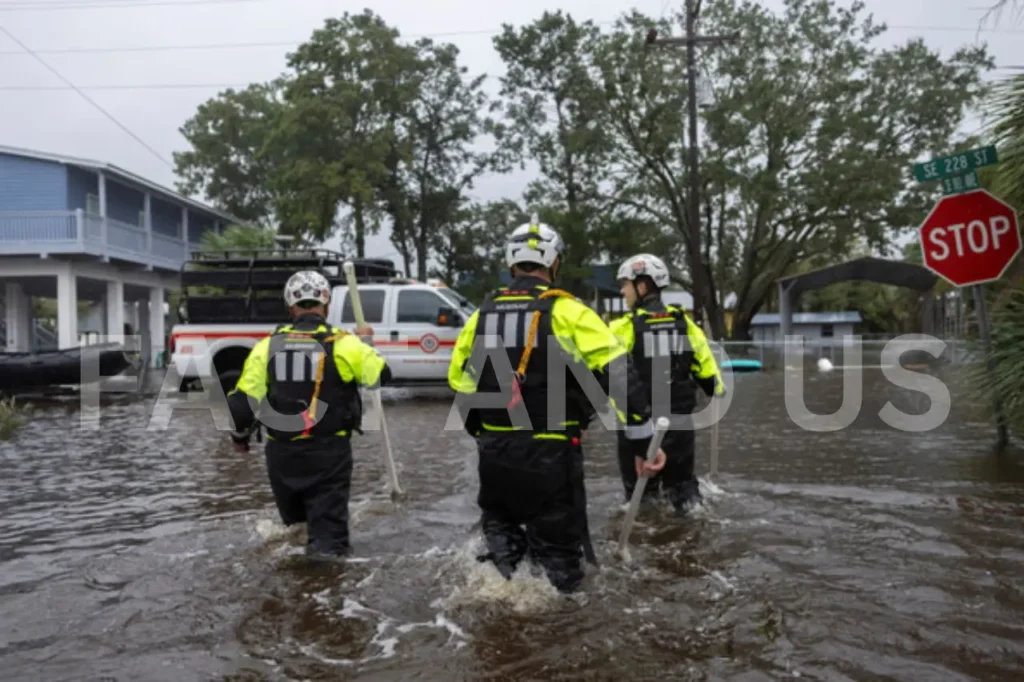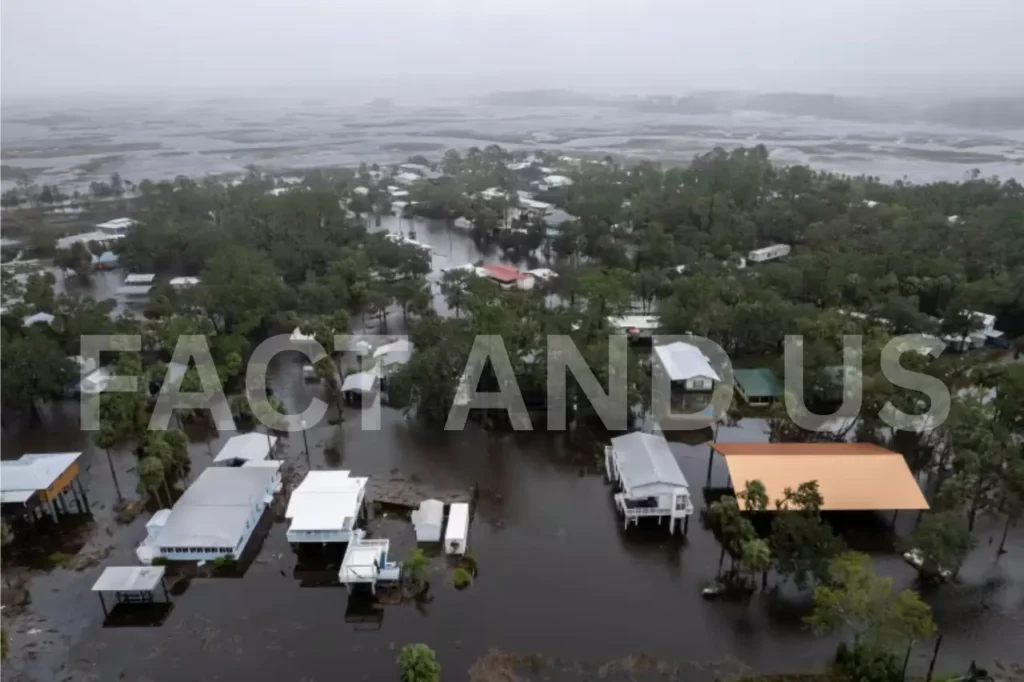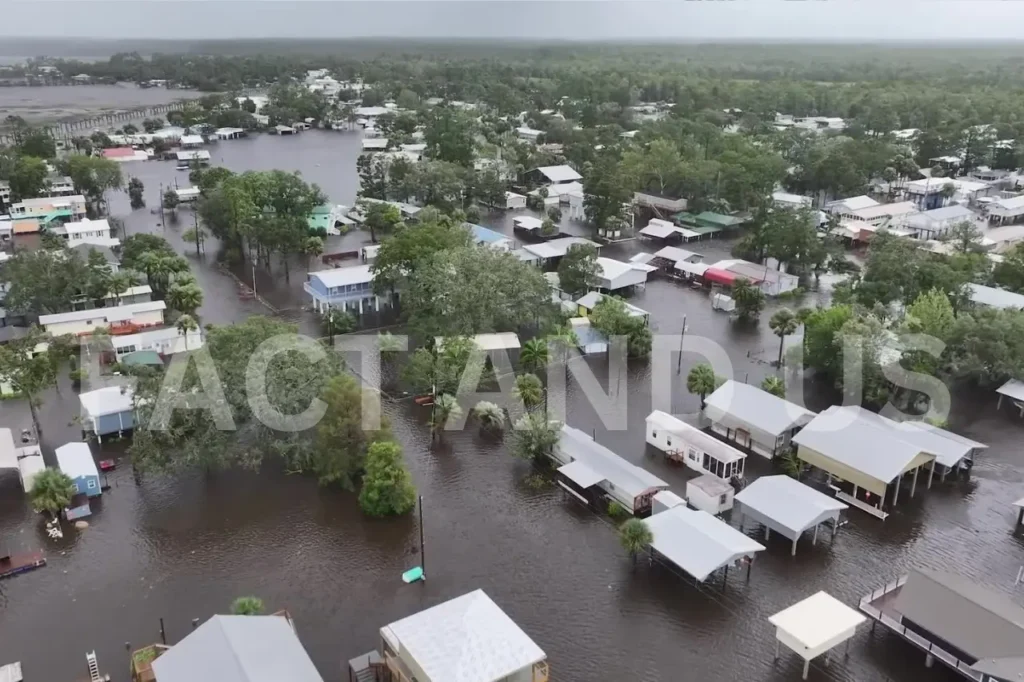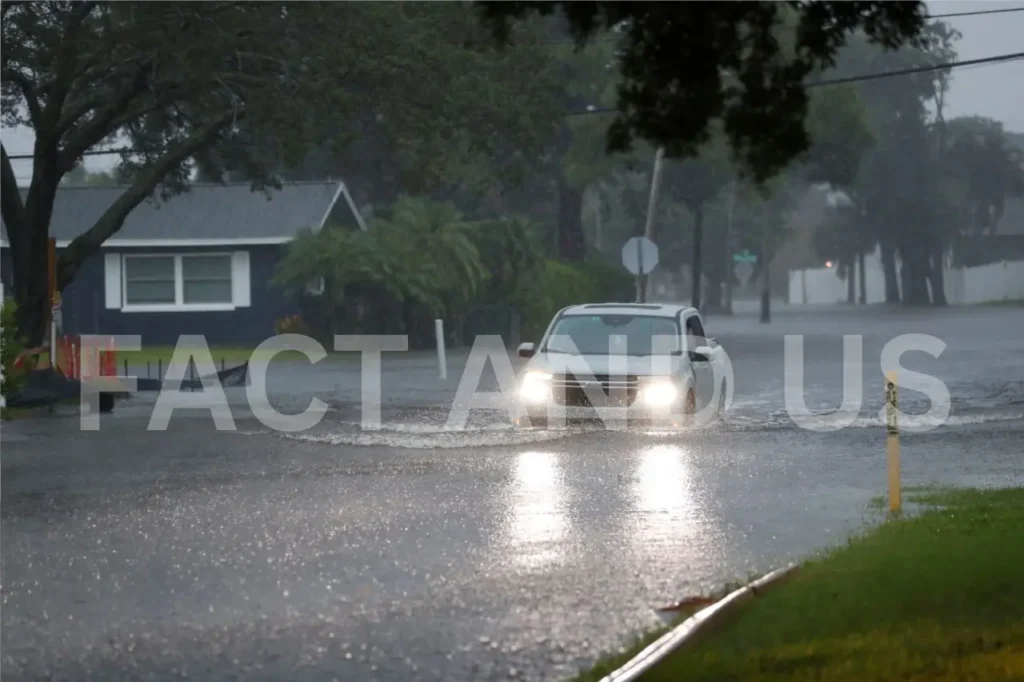Tropical Storm Debby is expected to bring downpours and flooding to historic southern US cities on Tuesday. At least five people were killed after it slammed into Florida as a category one hurricane before weakening to a tropical storm.

Early on Tuesday morning, its centre was 50 miles southwest of Savannah, Georgia, and 130 miles southwest of Charleston, South Carolina. The National Hurricane Center (NHC) warned of a “life-threatening” flood threat as the slow-moving storm soaks part of the US southeast. The slow-moving pace of the storm could bring “catastrophic flooding,” Jamie Rhome, the deputy director of the hurricane centre, said.
Tropical Storm
Debby’s waves and strong winds helped blow 25 packages of cocaine, worth more than $1 million, ashore in the Florida Keys, according to the US Border Patrol. In Florida, some 150,000 homes and businesses were without power on Monday night, according to PowerOutage.com. Another 36,000 residents in Georgia and South Carolina were experiencing outages.
The storm is forecast to skim the coast, drenching southeast Georgia and the Carolinas on Tuesday and Wednesday, before moving inland near the South Carolina coast on Thursday. Before the storm made landfall, Florida Governor Ron DeSantis declared a state of emergency for 61 of Florida’s 67 counties. Spyridon Aibejeris told USA Today repairs on his Keaton Beach home had just wrapped up two weeks ago from Hurricane Idalia, a category three storm that made landfall last summer. “Man, I’ve done this so many times,” Mr. Aibejeris said.


Forecasters predicted this hurricane season, which runs from 1 June to 30 November, would be a busy one. The National Oceanic and Atmospheric Administration (NOAA) said there could be up to 25 named storms in 2024. Between eight and 13 of those storms could develop into hurricanes.
Debby was the fourth named storm of the year. It is thought that climate change may be making slow-moving hurricanes like this more likely.
As the world heats unevenly, this causes changes in the atmospheric circulations that steer storms across the planet. Tropical Storm Debby is expected to bring downpours and flooding to historic southern US cities on Tuesday. At least five people were killed after it slammed into Florida as a category one hurricane before weakening to a tropical storm.
Early on Tuesday morning, its center was 50 miles southwest of Savannah, Georgia, and 130 miles southwest of Charleston, South Carolina. The National Hurricane Center (NHC) warned of a “life-threatening” flood threat as the slow-moving storm soaks part of the US southeast. Rainfall of 10 to 20 inches (25 cm to 50 cm) could bring catastrophic flooding to parts of southeast Georgia, the eastern half of South Carolina, and southeast North Carolina, the NHC said.

Authorities said the dead included a 13-year-old boy who was killed when a tree fell on a mobile home in the town of Levy County, located near Gainesville. In Hillsborough County—around Tampa—an 18-wheel truck veered into a canal during the storm. The driver was found dead. In Dixie County, just west of Gainesville, officials reported that a woman and a 12-year-old were killed when their car crashed on Sunday night.
In southern Georgia, another death—a 19-year-old—was reported after a large tree fell on to a porch at a home in Moultrie, local media reported. Debby’s waves and strong winds helped blow 25 packages of cocaine, worth more than $1 million, ashore in the Florida Keys, according to the US Border Patrol. In Florida, some 150,000 homes and businesses were without power on Monday night, according to PowerOutage.com. Another 36,000 residents in Georgia and South Carolina were experiencing outages.
The storm is forecast to skim the coast, drenching southeast Georgia and the Carolinas on Tuesday and Wednesday, before moving inland near the South Carolina coast on Thursday. Before the storm made landfall, Florida Governor Ron DeSantis declared a state of emergency for 61 of Florida’s 67 counties. Spyridon Aibejeris told USA Today repairs on his Keaton Beach home had just wrapped up two weeks ago from Hurricane Idalia, a category three storm that made landfall last summer.

“Man, I’ve done this so many times,” Aibejeris said. Forecasters predicted this hurricane season, which runs from 1 June to 30 November, would be a busy one. The National Oceanic and Atmospheric Administration (NOAA) said there could be up to 25 named storms in 2024. Between eight and 13 of those storms could develop into hurricanes.
Debby was the fourth named storm of the year. It is thought that climate change may be making slow-moving hurricanes like this more likely. As the world heats unevenly, this causes changes in the atmospheric circulations that steer storms across the planet
